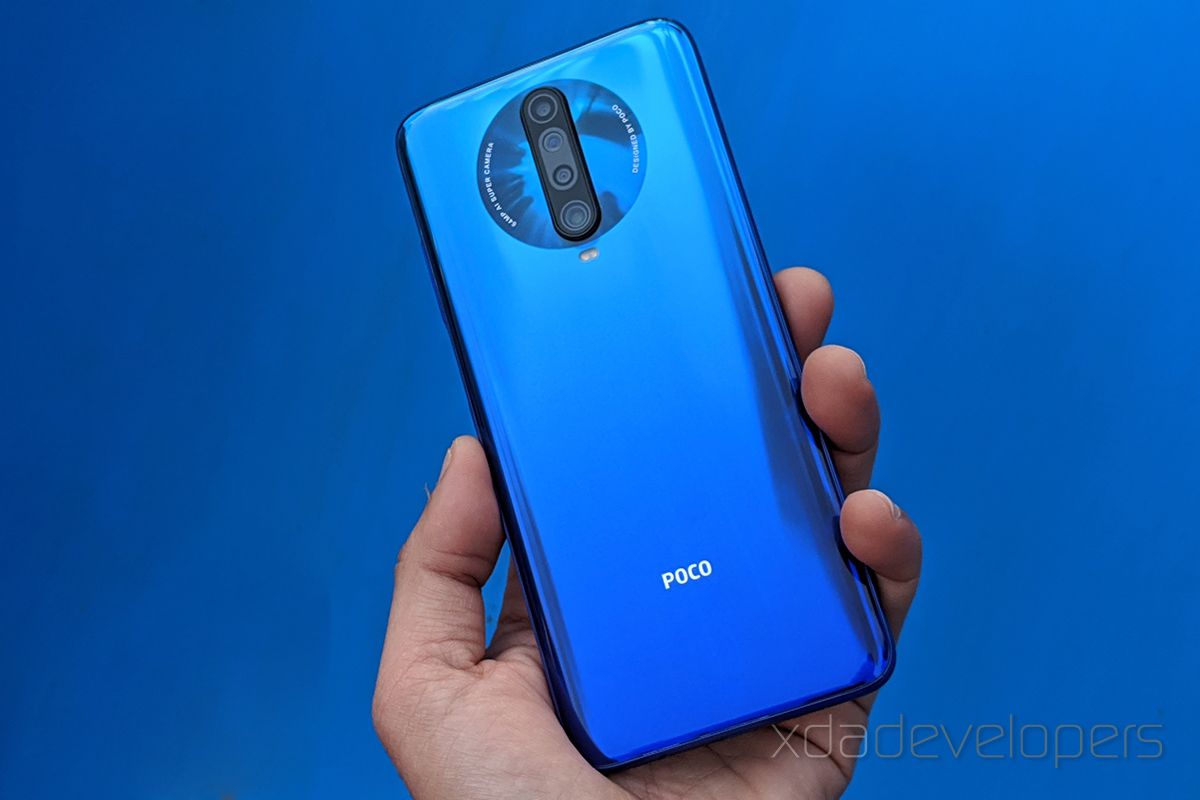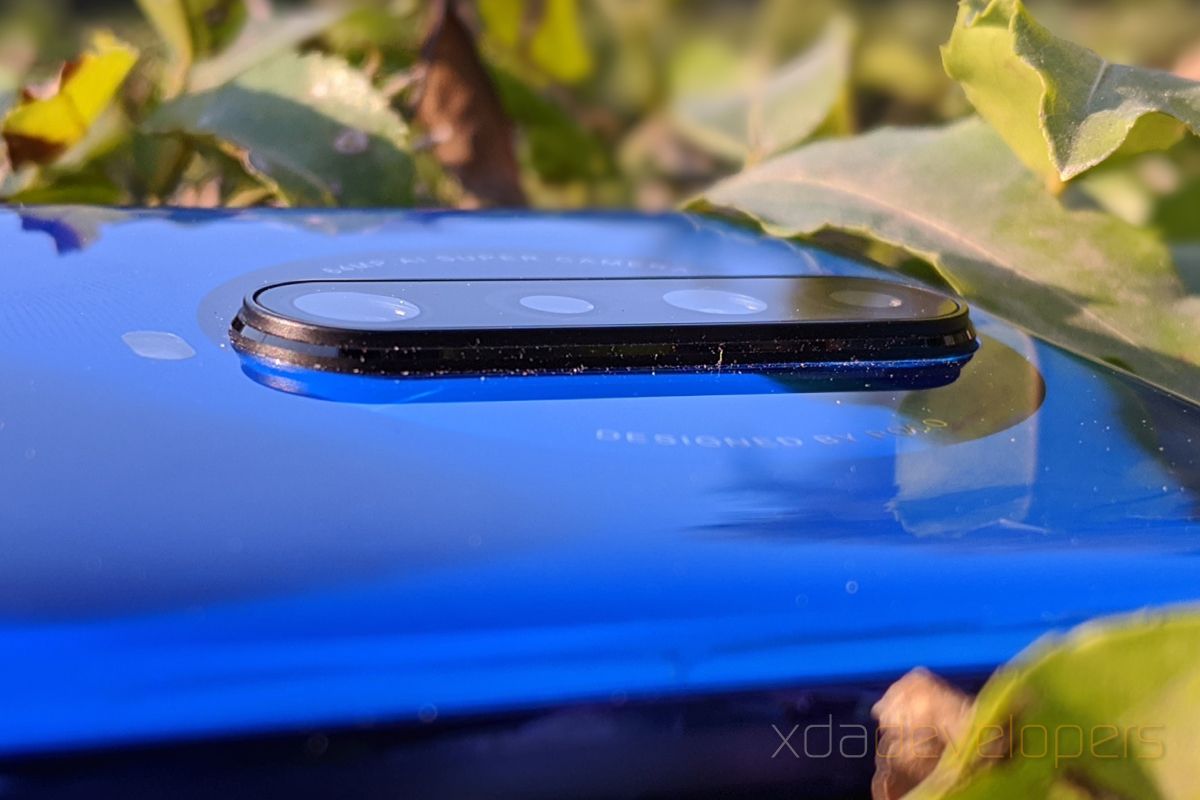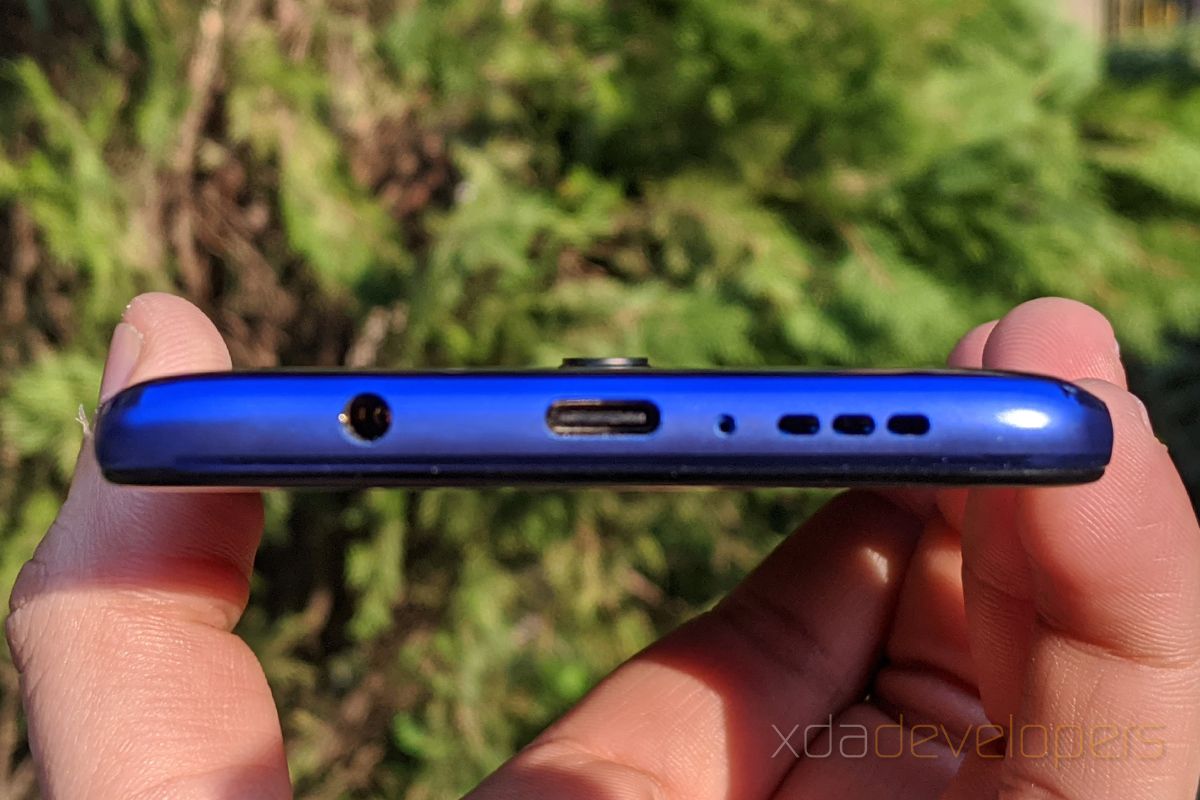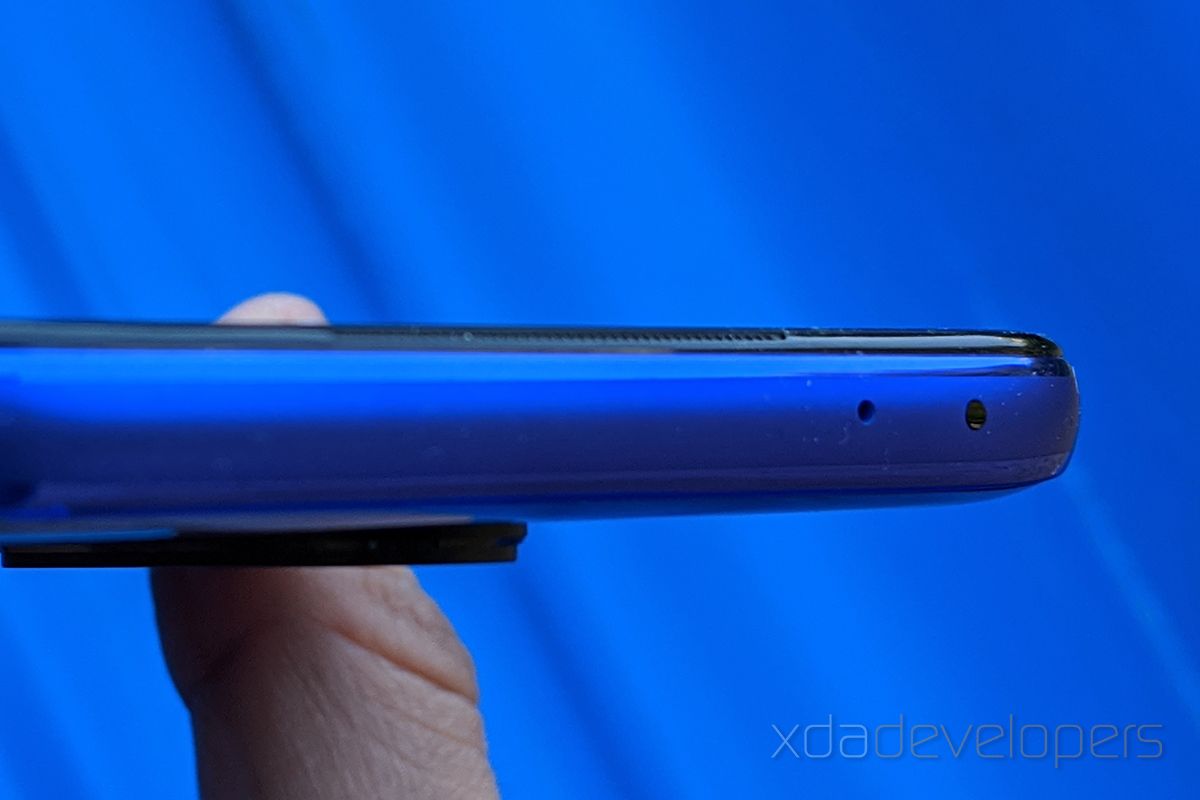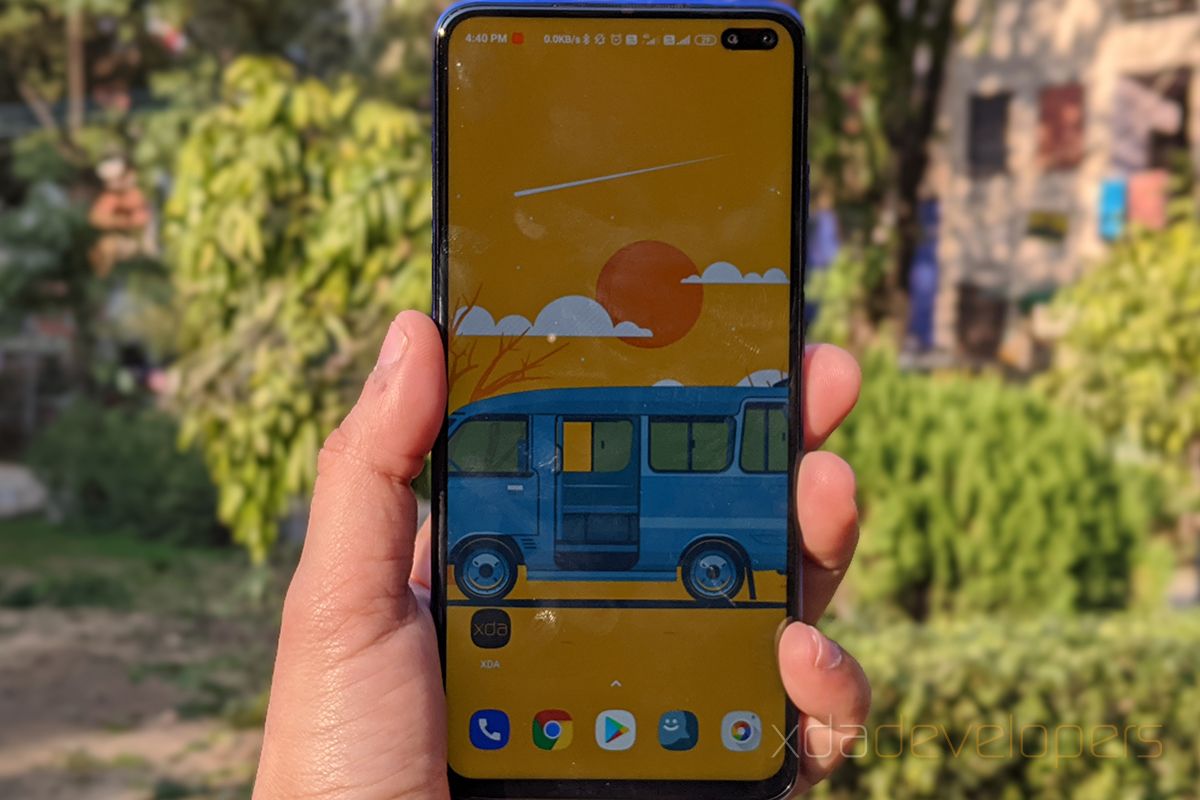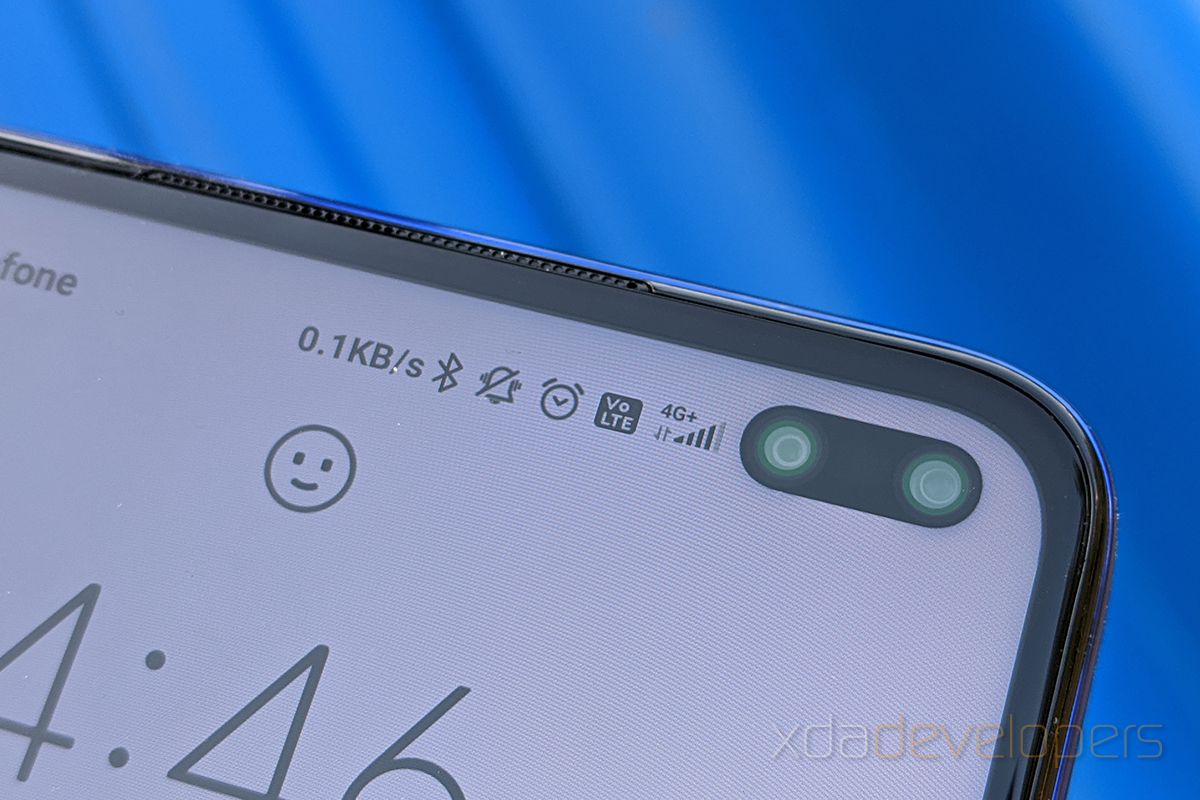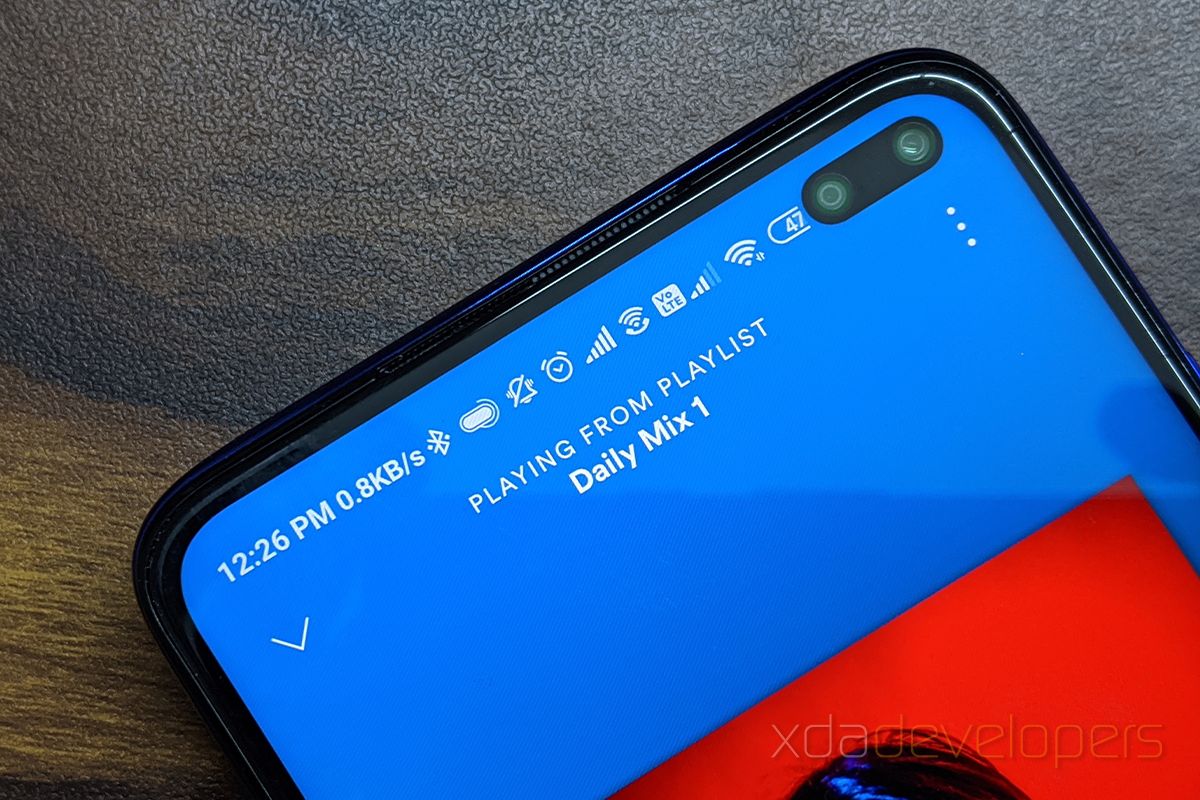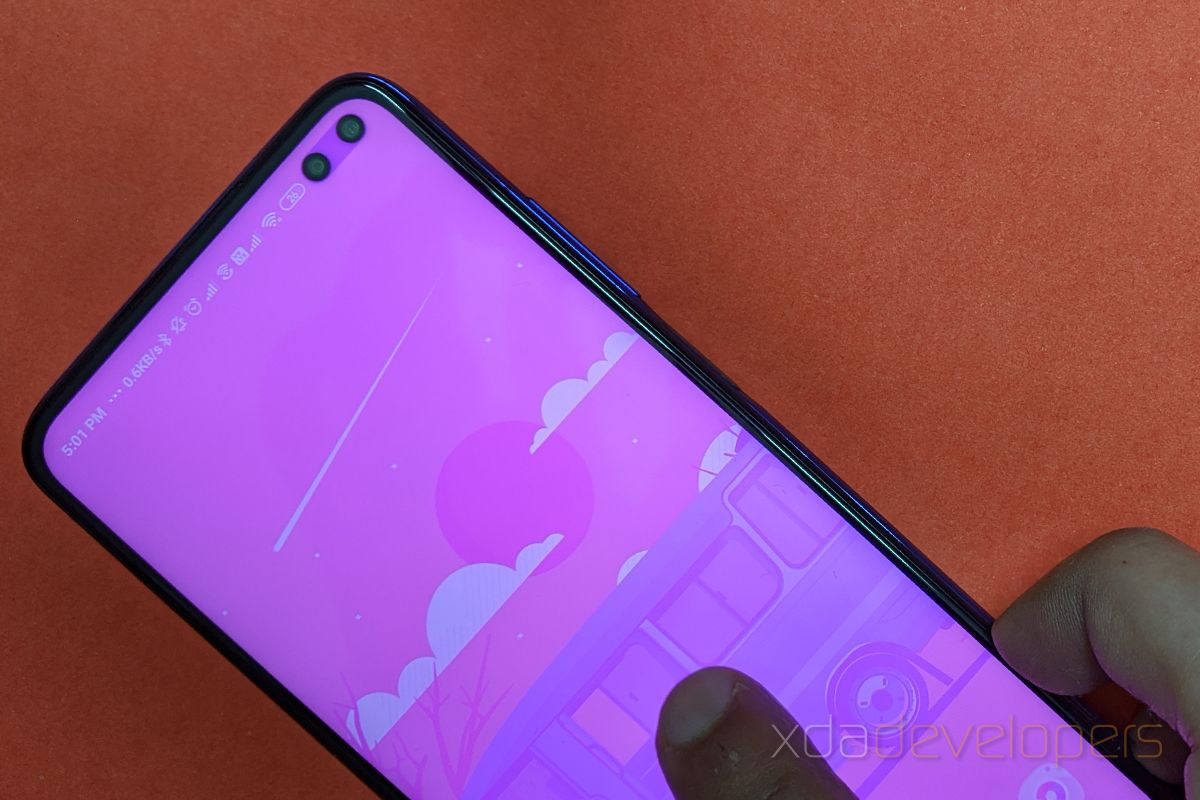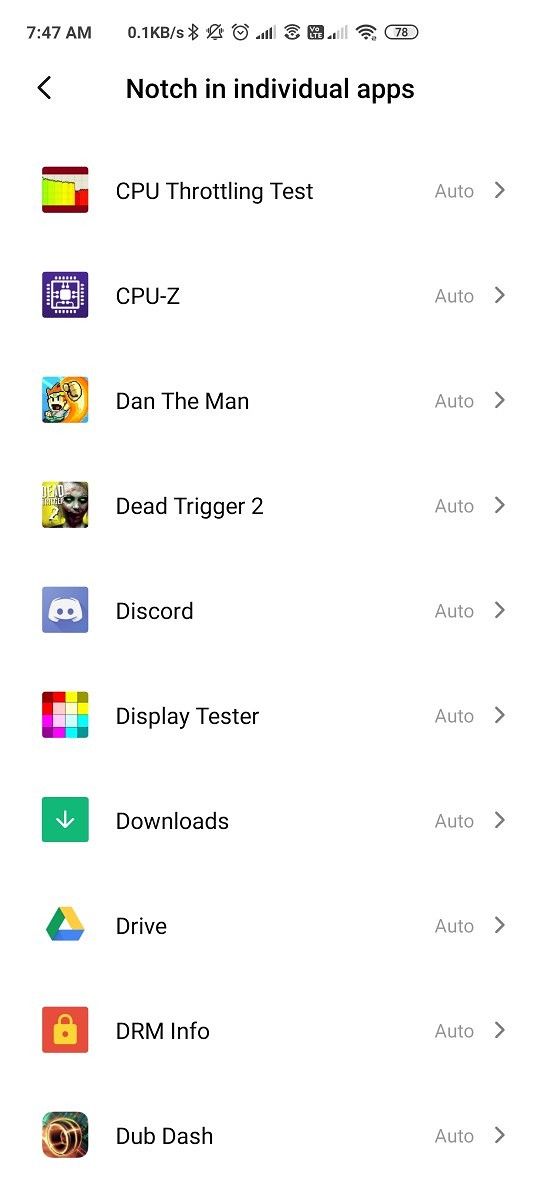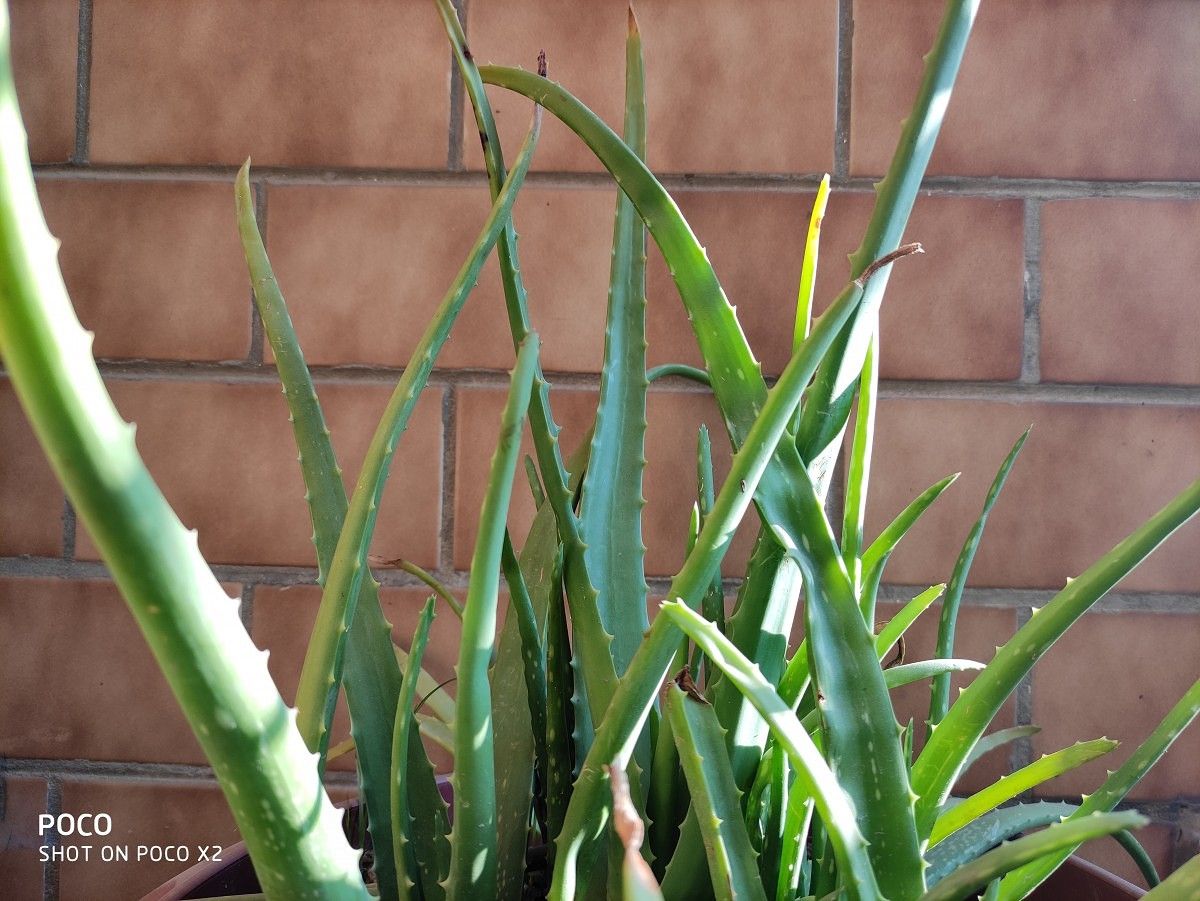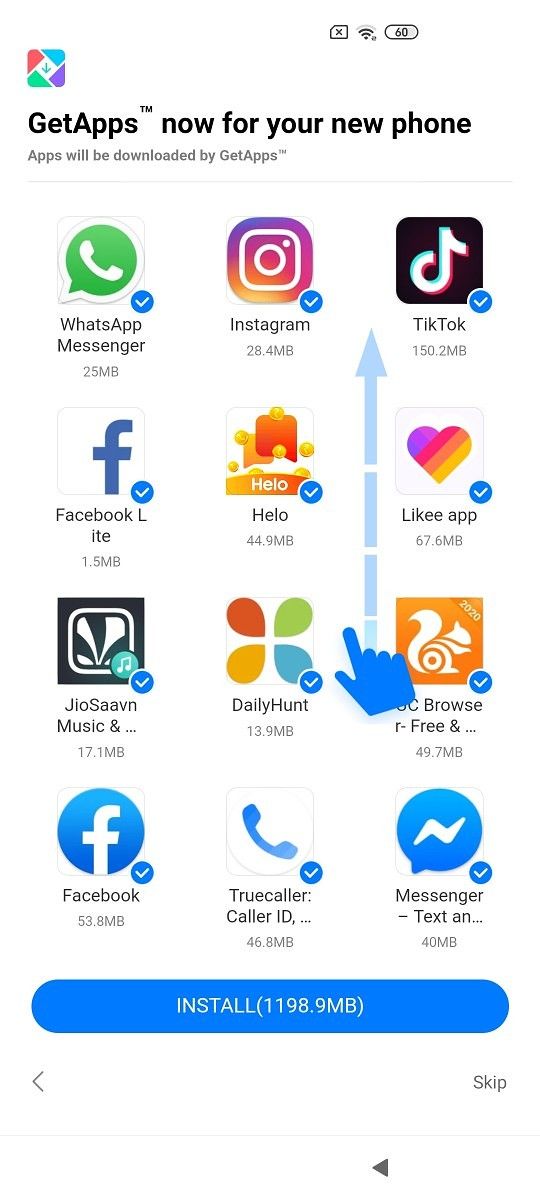

POCO X2 First Impressions: 120Hz display, 64MP quad cameras, more
source link: https://www.xda-developers.com/poco-x2-first-impressions-hands-on/
Go to the source link to view the article. You can view the picture content, updated content and better typesetting reading experience. If the link is broken, please click the button below to view the snapshot at that time.

POCO X2 First Impressions: A 120Hz display and 64MP camera spur twice the excitement
but, the yearning for POCO F2 remains!
Xiaomi’s Pocophone F1, also known as the POCO F1 in India, was met by an incredible amount of enthusiasm from smartphone enthusiasts after its launch. But its launch was followed by a period of somber silence from Xiaomi and desperation of those expecting to buy an upgraded POCO smartphone. There was even a time when people speculated that the Redmi K20 Pro would be the spiritual successor to the POCO F1 – and when that expectation was squashed by Xiaomi, we held out for the POCO F2. After much speculation and waiting for a successor, POCO finally announced it was spinning back into action by launching its first device as an independent brand. The company has now launched the POCO X2 – a device that seems to be an open challenge to Realme which also launched its namesake sub-flagship device. However, the POCO X2 phone is not what you might expect as a POCO F1 follow-up.

From a motley of features that make a high-performing flagship, team POCO, which was then led by Xiaomi, strategically chose the ones which were absolutely necessary to serve passionate users who’d eventually make potential buyers for the POCO F1 (our review). The initial response fueled by the phone’s convenient pricing made flagship performance accessible to a lot of users who would shy away from spending their money on brands like OnePlus. The POCO F1, in a sense, became the a priori flagship killer of 2018. Although it was very capable in terms of performance and gaming, the POCO F1 did not fulfill all the expectations of a flagship device, and the company faced harsh criticism for the phone’s problematic LCD, lack of support for HD playback in services apps like Netflix, and a fair share of battery draining and heat generation bugs. Despite all of this, the POCO F1 was heavily popular in the sub-$400 segment. Even though it isn’t really a successor, the POCO X2 still comes with some interesting upgrades over the POCO F1.
The good news is that the team behind POCO X2 has assured us that, moving forward, they will begin a much faster pace of development and a higher frequency of launches. In the words of C Manmohan, POCO India’s GM, the brand was born from the enthusiasm and spirit of entrepreneurship of certain Xiaomi employees. The launch of the POCO F1 was more or less like a pilot experiment, but now that the team has spun out of Xiaomi to be an independent entity – the legal process for which is still pending and will be completed in the coming months – their efforts will be dedicated to producing more practical results. Even after the legal process concludes, POCO will continue to use Xiaomi’s supply chain, distribution channel, and after-sales service network. This will ensure that users who buy the POCO X2 or the brand’s future smartphones can continue to have the same trust in POCO as they do in Xiaomi and Redmi.
Soon after the launch of the POCO X2 was confirmed, we found credible information that the phone is a rebadged Redmi K30 4G. POCO has confirmed that the X2 and the Redmi K30 4G are indeed the same SKUs. So, users who intended to buy the next POCO phone for its novelty might be disappointed by this, and we have already seen a lot of outrage on social media. The choice also seems to lay to rest the hypotheses about the Redmi K20/K20 Pro being the real POCO F1 successor. If not a successor, the Redmi K20 (and, not the Pro variant) does feel like a stopgap device for the POCO brand. However, the fact that the Redmi K30 is not available in markets outside of China yet should help calm some users. Others who bought the POCO F1 because of its extremely high value for money – without romanticizing how the OG POCO boosted the kinetics of the smartphone industry – should definitely appreciate the new offering.
Despite what its literal name in Spanish might imply, the first POCO phone did sell in huge numbers. The same may happen for the POCO X2 if the company manages to meet fans’ expectations by hitting the bullseye with great pricing once again. At the time I wrote this article, POCO India had yet to confirm the prices of the three models, but we do expect the pricing to be in the same ballpark as the Redmi K20 (or even lower). Our intention in comparing the pricing to the Redmi K20, and not its overseas double which carries the Xiaomi branding (ie. the Xiaomi Mi 9T), is because the POCO X2 will be initially limited to India. Thus far, there are no plans for an international release – at least in that the company isn’t willing to openly talk about it yet.
Update: The POCO X2 starts at ₹15,999 (~$225), which is an incredible price for a phone of this caliber.
As already demonstrated by the Redmi K30 4G, the POCO X2 is made for users demanding a smooth gaming experience and excellent photography with the Snapdragon 730G and the 64MP Sony camera respectively. It comfortably fits in the budding category of sub-flagships. I have been using the phone for the last four days and I feel it’s well-equipped for POCO’s comeback.
About this first impressions: An 8GB+256GB variant of the POCO X2 was loaned to us by POCO India for review.
POCO X2 Specifications
POCO X2 specifications
| Specification | POCO X2 |
|---|---|
| Dimensions and Weight |
|
| Display |
|
| SoC |
|
| RAM and Storage |
|
| Battery & Charging |
|
| Rear Camera | Photo:
Video:
|
| Front Camera |
|
| Other Features |
|
| Android Version | MIUI 11 based on Android 10 |
Design & Ergonomics
The POCO X2’s design isn’t a mystery since the Redmi K30 that it’s based on is already a month old. But, given the chance to finally hold and use it personally, I will definitely try and describe what I felt while using the phone. The very first observation I made about the POCO X2’s design is its breadth and heft. The phone features a large 6.67-inch display that grants the phone its tall and broad physique. Besides this, the POCO X2 is only slightly thinner than 0.9cm. A glass back was missing on the first Pocophone, and the company has added it to the POCO X2 to secure the dazzling shades on the back panel with Gorilla Glass 5. The curved edges of the glass back make the POCO X2 settle almost easily in the palm. Notably, the back does not feel like it’s made entirely of glass but rather a plastic panel reinforced with glass; this combination should ensure that the back does not get scratched up easily. It also comes with a water-repellent P2i coating, but this does not guard the phone against sweat, smudges, or fingerprints.
The back panel comes in three different color options – blue, red, and violet – and we have the blue one with us. While the first two have a reflective gradient surface, the third one has a satiny finish on the back with a single uniform color. The Redmi K30 also has a white color variant, but that is not available for the POCO X2 yet. Additionally, the camera module on the back is surrounded by a holographic circle that gives the impression of a convex mirror. This circle reflects light in a beguiling manner and takes your attention off the thick camera bump that houses the four rear camera sensors.
The surrounding frame is made of metal (correction: plastic) with an interesting finish. The peripheral edges of the frame are smooth and have a shiny finish while the part in the middle has a satiny finish. This makes the transition from the glass back to the side frame feel seamless and adds a character to the rails, something I find is left unattended to by the majority of the other brands.
The metal frame houses the volume rocker on the right alongside the flattened power button, which also serves as the fingerprint scanner. I’ve only used the Samsung Galaxy S10e briefly, so this is the first phone with a side-mounted fingerprint scanner that I’m using actively and I’m yet to form a solid opinion about this design choice. I cherish the leisure of a capacitive scanner’s fast unlocking and can easily unlock the phone using my right hand’s thumb or the left hand’s index or middle finger. On the contrary, I often unlock the phone without intending to because the fingerprint scanner is exactly where my thumb rests while using any phone. The problem has been taken into account by the design team – which is common to Xiaomi, Redmi, and POCO – and you can choose to unlock the phone with the fingerprint scanner only when the power button is pressed. Nonetheless, you will most probably have to work your way through the learning curve to realize which of the two options would you pick between the two. Owing to the side-mounted fingerprint scanner, POCO has withdrawn the IR camera for face unlock.
Apart from the volume and the power buttons, the POCO X2’s metal frame features a speaker grille adjacent to a USB Type-C port, the primary microphone, and a headphone jack at the bottom. While it features a hybrid SIM slot on the left, the top of the Realme X2’s frame carries the secondary microphone and an IR blaster, the latter of which is commonly found on Xiaomi and Redmi phones but was oddly missing on the POCO F1. Like most other phones these days, the new POCO relinquishes the notification LED. Additionally, the lack of an AMOLED display makes it easy for notifications to be missed.
Overall, the POCO X2 feels like it is built solidly and the body feels more rigid than the POCO F1. The heft may not be everyone’s cup of tea and might be better suited for users with big hands. If you want a massive screen for your entertainment or gaming, the POCO X2 should satisfy your needs.
Display
The display, I repeat, is huge, but I don’t mean that in a negative way. It boils down to personal preference but, one thing that people generally prefer is AMOLED over LCD due to the superior color contrast and vibrancy. Despite its flagship specifications, the POCO F1 also featured an LCD, which was probably chosen for cost-cutting, and that doesn’t change with the new POCO. What does change, however, is the display size and its refresh rate. The 120Hz refresh rate on the POCO X2 means that content refreshes up to 120 times per second, surpassing the 90Hz that we have seen on authentic flagships like the OnePlus 7 Pro (review), OnePlus 7T (review), the OnePlus 7T Pro (review), and the Realme X2 Pro (review). Few phones have come with 120Hz display, with the list including the two Razer Phones as well as the ASUS ROG Phone II. However, the POCO X2 is the first non-flagship to sport a 120Hz refresh rate, and this raises exciting possibilities about the trends we might see this year.
The hole punches in the display for the dual front-facing cameras adds a modern element to the POCO X2. The dual cameras mandate more space than a centered notch, and the items in the status bar are therefore shifted to the left. However, if the status bar gets overcrowded, some icons can be hidden under the front cameras.
While the pill-shaped area gives the impression of a single and uniform cutout, switching on the “Show surface updates” toggle from Developer Options can confirm that this is just a cover-up. If you’re not fond of the hole-punch, you can either turn the background of the status bar to black or deactivate the entire area so that the status bar shifts downwards.
Coming to the quality of the POCO X2’s display, the panel has a pixel density of ~395ppi. Being an LCD panel, it has an easily noticeable bluish tinge, even more so when the X2 is kept beside another phone with an AMOLED panel. When viewed from the side or at extreme angles, the colors of the display appear much cooler. Regarding the brightness of the display, it seems reliable and easily legible under sunlight. However, compared to an AMOLED, the brightness still feels lacking. At high brightness, minuscule squares – which are possibly grids of pixels – become visible when the phone is held close to the eyes. This trade-off is permissible to some extent considering you’re getting smooth scrolling thanks to the 120Hz refresh rate at hopefully a lower price point than what the POCO F1 was introduced at.
Cameras
A significant upgrade to the POCO family comes in the form of cameras. Compared to the dual rear cameras on the POCO F1, the POCO X2 leaps to quad rear cameras. While we saw the second half of 2019 dominated by Samsung’s ISOCELL Bright GW1 64MP sensor, the Redmi K30 series, and therefore, the POCO X2, are among the first smartphones in the world (and the very first in India) to get Sony’s IMX686 64MP camera sensor, which succeeds the uber-popular Sony IMX586 48MP sensor. The Sony IMX686 is a 1/1.7-inch sensor, which is slightly bigger than its Samsung counterpart, allowing in a tad bit more light – even though both the sensors utilize pixels of 0.8μm. With the help of 4-in-1 pixel binning, both sensors produce 16MP images which are primarily made of 1.6μm pixels.

Along with the primary 64MP sensor, the camera setup features an 8MP wide-angle camera with a 120º field of view, a 2MP macro camera, and a 2MP depth sensor. While the wide-angle camera is fixed focus, the 2MP macro camera supports auto-focusing, and this will allow users to get really close to tiny objects. Additionally, all three sensors support video recording – the main sensor can be used to record up to 4K videos at 30fps, the wide-angle at up to 1080p at 30fps, and the macro camera can shoot 720p video at 30fps.
The front camera setup includes a 20MP main selfie shooter and a 2MP depth sensor for accurate bokeh in portrait selfies. The front camera can also be used for recording videos at up to 1080p.
While I haven’t had a lot of time to test the camera fully, here are some of the images I took using the POCO X2’s cameras:
Stay tuned for many more images and video samples in our detailed review.
Performance & Battery
The POCO X2’s inability to be called a true flagship is due to the fact that it is powered by the Qualcomm Snapdragon 730G. The mobile platform shows definite readiness for playing most heavy games, as we saw in our Realme X2 gaming review, but the framerate might be restricted by software in games like PUBG Mobile. In theory, the 120Hz display should support games that feature gameplay at up to 120fps, but I’ve tried several popular games that purportedly support high-refresh rate displays and none of these supported gameplay above 60fps. The games that I tried came from the list of supported games for the Razer Phone and the ASUS ROG Phone II, including Lara Croft: GO, Subway Surfers, Vainglory, Armajet, Alto’s Oddessey, and more. We can expect POCO to announce a list of games that officially support high frame rate gameplay since that’s a driving factor behind the adoption of a higher refresh rate LCD over a 90Hz AMOLED.
During my initial gaming experiences on the POCO X2, the phone ran games like PUBG Mobile (max at 40fps unless overclocked with PUB GFX tool), COD Mobile (at 60fps), Asphalt 9, Real Racing 3, etc. effortlessly. There is some heating to be observed, but we’re yet to quantitatively test any sort of thermal throttling on the phone. We also intend to compare synthetic benchmark performance in our full review.
When it comes to the battery, the POCO X2 features a 4,500mAh battery with support for Qualcomm’s Quick Charge 4.0+. The charger within the box surprisingly supported charging at up to 27W even though it is only rated for Qualcomm Quick Charge 3. During my trial usage, I’ve had to charge the phone only once in more than 24 hours. In a scenario with casual gaming on Wi-Fi and about 5.5 hours of screen-on time (SOT), I could easily get about 30 hours of backup on the phone. Recharging the battery from 10% to 100% capacity using the stock charger takes about 65 minutes, which is pretty fast. We’ll be testing this in more detail over the coming days.
User Interface
The POCO X2 runs MIUI 11 based on Android 10 and sports the POCO Launcher by default. You can choose from different themes while setting the phone up and this includes both wallpapers and icon packs. The phone comes with a number of unwanted bloatware, many pre-installed apps, and more that you’ll be prompted to install at startup. The ads in MIUI have already been reduced to quite an extent, but you can expect to see some show up in the pre-installed web browser. I haven’t come across ads in other system apps yet.
Development Prospects
The POCO F1 was Xiaomi’s exception when it came to long bootloader unlocking periods. The phone could be unlocked by waiting for just 72 hours as compared to a standard minimum of 168 hours for Xiaomi phones. This spurred the development of custom firmware and encouraged users to dabble with custom ROMs and other mods if they were not satisfied with the MIUI Android skin or wanted to enable features like EIS.
We have been ensured the same 3-day bootloader unlock waiting period will continue with POCO X2. Not only that, but the company has also ensured that they will continue to take steps that promote custom development endeavors. For this, the kernel source code of the POCO X2 will be released on the day of the launch and frequently updated. We hope this will prompt our dedicated community to continue its efforts for the phone.
To complement this effort, we have already opened XDA forums for POCO X2 (phoenixin) and will support its development in any way possible.
POCO X2: Culmination of a subsidiary’s evolution into a start-up
The POCO X2 grants a good reboot opportunity to the brand while the reliability of Xiaomi’s sales and after-sales networks should ensure that the smartphone meets its destined popularity. For anyone who has become invested in the POCO brand, this phone could be a rollercoaster for all its pros and cons, the biggest of which is the lack of a flagship processor. But if this changes anything, we hear that POCO should soon be back again with a legit flagship device.
POCO X2 against POCO F1
Here’s a quick rundown of things that have improved over the POCO F1 and things that remain to be potential pet peeves.
Things that have improved over the POCO F1
- You now get Widevine L1 out of the box and among all OTT apps, Netflix supports full HD playback.
- The 120Hz display could be a great advantage for mobile phone gaming enthusiasts.
- A 27W charger is now included within the box.
Still the same, or worse
- The Adreno 618 is a weaker GPU as compared to the Adreno 630 on the Snapdragon 845, even though the microarchitecture of the Snapdragon 730G and the Snapdragon 845 is quite comparable.
- The LCD is still prone to edge bleeding issues and the 3-finger screenshot bug in MIUI still plagues the phone.
- This time around, there’s no stereo speaker – although we do expect the community to churn out a mod that enables the earpiece to be used as the secondary speaker.
- There’s no mention of a heat sink this time around, and the glass back could be poorer in terms of radiating the internal heat outward as compared to plastic.

While the POCO X2 is not a true successor to the POCO F1, the cameras see a major upgrade and we expect to see some beautiful results out of the 64MP Sony IMX686 sensor as well as the other sensors on both the back and the front of the phone. The POCO X2 will be exclusively available in India via Flipkart starting February 11th at noon and the first sale is expected to be a flash sale.
The prices of the different variants of the POCO X2 are as follows:
- 6GB+64GB – ₹15,999 (~$225)
- 6GB+128GB – ₹16,999 (~$240)
- 8GB+256GB – ₹19,999 (~$282)
Recommend
About Joyk
Aggregate valuable and interesting links.
Joyk means Joy of geeK

